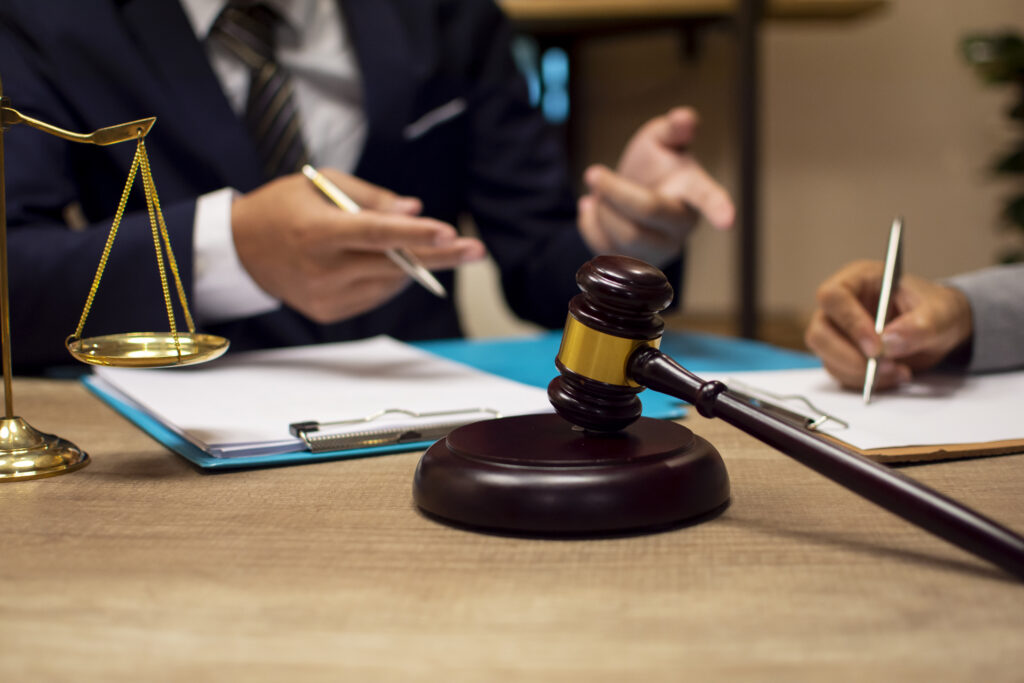The New York Times continued its deceptive caricature of arbitration in Part 2 of its “special report,” which hit newsstands Monday. (Others, including Yale Law School Professor Steven Carter have recognized the flaws in the Times’ report—which are also discussed in our analysis of Part 1.)
The Times claims to have examined “records from more than 25,000 arbitrations”—and selected 16 or so examples, each of which paints arbitration unfavorably.
Does that mean that all of the other 24,984 arbitrations had similar characteristics? Or did the Times choose examples that fit its pre-determined narrative?
Let’s look at what the Times completely ignored: statistical evidence compiled by independent scholars finding that most people in arbitration fare at least as well as—if not better than—they would in court.
- Scholars Christopher Drahozal and Samantha Zyontz studied claims filed with the American Arbitration Association (AAA), the oldest arbitration provider in the country and the one that handles the most consumer disputes. They found that consumers win relief 53.3% of the time. This success rate compares favorably with the success rate of plaintiffs in state and federal court, who studies have shown prevail roughly 50% of the time. Just as in court, Drahozal and Zyontz found that consumers who win in arbitration are able to recover not only compensatory damages but also “other types of damages, including attorneys’ fees, punitive damages, and interest.” In particular, 63.1% of prevailing claimants who sought attorneys’ fees were awarded them.
- Another study of the Kaiser Foundation health plan, which uses mandatory arbitration, found that 50% of parties and attorneys reported that the arbitration system was better than going to court. Another 42% reported that it was the same as going to court—and only 10% reported it was worse.
The Times could have and should have addressed this statistical evidence, which shows that arbitration provides a fair forum for consumer claims. Instead, it built its case on hand-picked outlier cases that don’t reflect the experience of most consumers.
Why did the Times use the anecdote approach? Well, one well-known plaintiffs’ lawyer has taken some credit, stating that he “worked extensively with [a reporter on this series] over the past several months.” It is no surprise the article parrots a handful of anecdotes that are routinely cited by the plaintiffs’ bar.
Anecdotes, however, are not always all they are cracked up to be. A few years ago, plaintiffs’ lawyers and their allies in Congress pushed heavily the story of Jamie Leigh Jones, a contractor who had sought to sue Halliburton and asserted that she would not get a fair shake in arbitration. The courts allowed her case to proceed to a jury trial, after which it became clear that Ms. Jones’ claims were meritless. The plaintiffs’ bar has dropped mention of her like a hot potato.
What else did the Times ignore? Every single legal protection that applies to arbitration. A reporter could find ten cherry-picked court cases in which judges blatantly misapplied the law. Would that mean the entire judicial system is blatantly unfair? No one would know unless they looked at the rules and at a fair sample of cases. A fair sample of arbitration cases completely rebuts the Times’ narrative, as the academic studies demonstrate. Moreover, the governing rules confirm that conclusion, as discussed below.
Oh, and one more thing. As the Washington Post has observed, the Times apparently forgot that its own contract with readers who sign up for “Times Journeys Tours” contains an arbitration clause, albeit one not as fair to consumers as the provisions used by many of the companies castigated in the Times piece. Does the Times think it is being unfair to its own customers? (Pointing out the Times’ hypocrisy on Twitter, Daniel Fisher of Forbes advised Times readers to “[c]heck the fine print.”)
Consumers Are Protected Against Unfairness In Arbitration
A fair appraisal of arbitration’s procedures show that it is much friendlier to consumers than our complex and slow-moving court system. Tellingly, the authors of the Times “report” ignore the consumer arbitration rules used by the most well-known arbitration administrator, the AAA, which provide numerous safeguards for consumers, such as strict standards to protect against arbitrator bias and providing that the business—not the consumer—pays all arbitration fees above a $200 cap. (Of course, many companies pay the entire cost of arbitration.)
More than three hundred companies—including most of the country’s largest—use the AAA. That includes just about all of the companies mentioned in Part 1 of the Times series—AT&T, American Express, Chase, Wells Fargo, Netflix, and fifteen others.
Moreover, arbitration’s simpler evidentiary and procedural rules allow consumers to present their claims without needing to hire a lawyer, and leading arbitration providers permit hearings to be conducted on the basis of paper submissions or by telephone so that claimants do not need to miss work or incur unnecessary travel costs in order to attend. Arbitration demands can even be filed online.
As the Supreme Court has recognized, the “informality of arbitral proceedings” is “desirable, reducing the cost and increasing the speed of dispute resolution.” This is unquestionably good for consumers, who want money back in their pockets quickly when they bring a claim against a business. In addition, leading arbitration providers ensure that consumers can play a role in the selection of an arbitrator (by ranking potential candidates whom they prefer) and can challenge arbitrators if they turn out to be biased. In the judicial system, plaintiffs don’t enjoy anything close to that level of input into the selection of a judge. The AAA, in particular, is also structured as a non-profit that makes arbitration available as a public service.
The Times also never mentions that the law contains clear and effective protections against unfair arbitration clauses such as the ones described in its examples. Courts have the power to invalidate arbitration agreements that violate generally applicable principles of fairness.
And they do just that—striking down unfair arbitration provisions, such as requirements that arbitration take place in inconvenient locations, biased procedures for selecting an arbitrator, or agreements that impose excessive costs on consumers in order to access arbitration. (Indeed, under this principle, a consumer who purchased a trip from the New York Times’ “Journeys” web site would have powerful arguments that features of the “Times Journey” arbitration clause are unfair and should not be enforced, such as its requirement that consumers arbitrate in New York City, even when they are from across the country. By contrast, the due process protocol of the AAA—the non-profit organization castigated by the Times—provides that “[i]n the case of face-to-face proceedings, the proceedings should be conducted at a location which is reasonably convenient to both parties with due consideration of their ability to travel and other pertinent circumstances.”)
As we explained in our analysis of Part 1 of the “report,” the vast majority of arbitration provisions do not exhibit these sorts of defects, and the clear trend has been for companies to make arbitration provisions ever more favorable to their customers. But when courts find overreaching—in the areas discussed above and many others as well—they have not hesitated to strike down the offending arbitration provisions. It is simply misleading for the Times to suggest that arbitration is a privatized justice system that is not subject to oversight.
The Court System Has Many Flaws
The Times identifies what it describes as examples of arbitrator bias and corruption. Of course, any instance of biased decision making—whether by an arbitrator or a judge—is unacceptable. But the relevant question isn’t whether arbitration is perfect, because no system of dispute resolution is perfect. Rather, the question is whether bias and corruption are any more common in arbitration than they are in the judicial system. The answer to that question is, “No.”
In fact, instances of bias and corruption are pervasive in our courts as well. Consider just a few examples of wrongful behavior by plaintiffs’ lawyers and judges:
- As Daniel Fisher reported in Forbes on Sunday, November 1, Gary Friedman, the plaintiffs’ lawyer who represented the Italian Colors restaurant featured in Part 1 of the Times “report,” had a court reject his proposed class action settlement in another case, finding that his “improper and disappointing conduct”—i.e., improperly colluding with opposing counsel to reach a suboptimal settlement for class members—had “fatally tainted the settlement process.”
- A California court threw out a multi-million dollar verdict against Dole Foods for allegedly making Nicaraguan workers sterile through the use of pesticides after “Dole’s attorneys proved that many of the plaintiffs never worked for the company and weren’t, in fact, sterile. Witnesses and investigators were intimidated in Nicaragua, and plaintiffs were coached to concoct false stories.” Reporting on the case, Bloomberg Business concluded that “there’s deep dysfunction within [the] powerful portion of the legal profession that claims to fight corporate abuse on behalf of the little guy.”
- Stanley Chesley, a plaintiffs’ lawyer and husband of a federal judge, was found liable to his former clients for $42 million after it was revealed that he and other lawyers collected fees in fen-phen cases that far exceeded what their contracts with clients specified.
- Mikal Watts, a well-known plaintiffs’ lawyer, was recently indicted in Mississippi “on 95 counts of conspiracy, mail fraud, wire fraud, identity theft and aggravated identity theft,” arising out of the BP oil spill settlement litigation. Watts made the news in the wake of the spill when he announced that he had recruited more than 40,000 spill victims as clients. In 2013, it was revealed that many of these “clients” had been listed without their knowledge or consent—or were listed with false identifying information. These “clients,” according to ABC News, included “four dead people and a boat deckhand named ‘Lucy Lu,’ who the government says is actually a dog.”
- Dickie Scruggs, the so-called “King of Torts,” who made his name when he negotiated a multibillion dollar settlement between tobacco companies and state attorneys general, pleaded guilty in 2008 to attempting to pay a $40,000 bribe to a judge in a dispute with other plaintiffs’ lawyers over fees, and was sentenced to five years in prison. In 2009, he also pleaded guilty to attempting to influence another judge—also in a dispute over fees with another plaintiffs’ lawyer—and was sentenced to an additional two years.
- Abel Limas, a former trial court judge in Texas, pleaded guilty in 2011 to “us[ing] [his] office of judge of the 404th District Court as a criminal enterprise to enrich himself and others through extortion”—including by arranging with a trial lawyers’ firm that appeared before him that he would join the firm after leaving the bench and would receive a cut of their recovery in the case he was handling.
- Another Texas trial judge pleaded guilty earlier this year to accepting bribes—including free repairs to his two Mercedes vehicles—in exchange for giving “favorable judicial rulings” to the clients of a criminal defense lawyer.
- Yet another Texas trial judge was found guilty in 2011 of accepting campaign contributions in exchange for future favorable rulings. The state bar suspended her law license for 10 years.
- In the infamous “Kids for Cash” scandal, two Pennsylvania judges took bribes from businessmen who owned private juvenile detention facilities. In exchange for the bribes, one of the judges “routinely found children guilty” in order to fill up the facilities. That judge was sentenced to 28 years in prison.
And then there are the extensive reports—including by the Times—of the inadequacies of small claims courts, including budget cutbacks producing long waits that force individuals to leave empty-handed, only to return another day in the hope that their disputes will eventually be heard. These problems are not limited to small claims courts: in Los Angeles courts are facing “unmanageably high” workloads, which is producing “intolerable delay” in civil cases.
Do courts always decide cases correctly? Of course not.
One would think that criminal cases involving serious penalties would be the best examples of fair and accurate decision making, given that a life is at stake. But even in these critically important cases, jurors and judges don’t always live up to their responsibilities:
- Judges and juries also sometimes display shocking levels of apathy and inattentiveness in these critical cases. In a 2007 capital murder trial in Ohio, a juror fell asleep several times during witness testimony. When this was brought to the attention of the judge, the judge responded, “I saw it. So what. Let him sleep. You guys picked this jury, I didn’t.”
- Similarly, in 2006, the Florida Supreme Court publicly reprimanded a trial court judge who ignored evidence that a juror was asleep during a capital murder trial. The high court found that the judge in question had been passed a note from another juror informing him that a juror was asleep but had discarded the note and failed to advise the lawyers. When defense counsel later found out about the issue and asked for a continuance to investigate, the judge denied the continuance and proceeded with sentencing, stating there was insufficient evidence that any juror had been asleep.
- The Innocence Project website reports 333 exonerations based on DNA evidence in cases in which defendants had been wrongfully convicted.
Had the Times investigated our judicial system, it could have come up with many more examples of misconduct by judges, juries, and plaintiffs’ lawyers than it found on the part of arbitrators. Perhaps the Times would have concluded that we shouldn’t have courts, either!
The plain fact is that it is possible to find anecdotes to support almost any claim. But that doesn’t mean the claim is generally or even often true.
Conclusion
It’s clear that the Times is out to try and prove that arbitration is bad for consumers. Its “special report” doesn’t come close to making that case. Rather than looking at the big picture, the Times simply cherry-picked a handful of troubling stories and then wrongly implied that they were representative of all arbitrations.
The evidence shows that arbitration works as well or better for consumers than litigation in court does—more quickly, and at a lower cost. It’s too bad that the Times decided to bury that information instead of giving its readers the full story.



